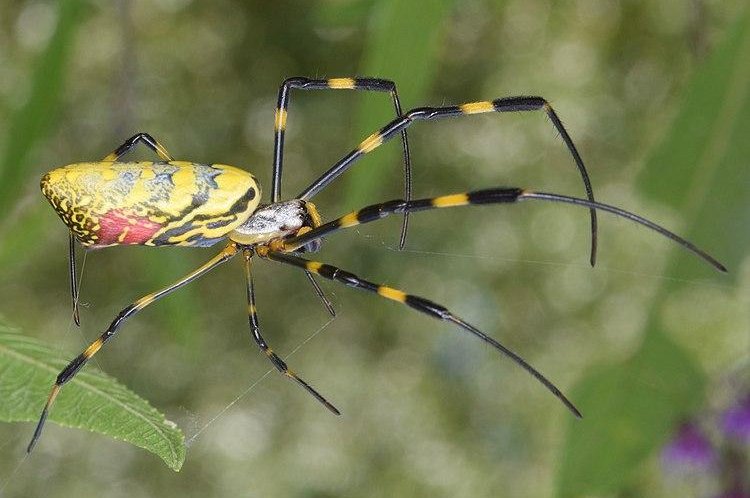The Joro, which can grow to a size that can span a human palm, is one of only a few spiders that will catch and eat brown marmorated stink bugs, which are serious pests to many crops, and help suppress mosquito and biting fly populations. File Photo by Christina Butler/
Wikimedia Commons
March 14 -- After rapidly reproducing in Georgia last year, the Joro spider, native to East Asia, could spread to much of the East Coast in the coming year, according to new research from the University of Georgia, which also suggests the insects' ability to survive certain weather conditions will influence just how far north they move.
The Joro spider is a part of the Trichonephila clavata species and is part of a group of spiders known for highly organized, wheel-shaped webs. The females have colorful yellow, red and blue markings on their bodies and can measure up to 3 to 4 inches when their legs are fully extended. The males have a brown body and are much smaller compared to the females.
The Joro spider was first identified in the U.S. almost 10 years ago in 2014 when Rick Hoebeke, a collections manager at the Georgia Museum of Natural History, received a call about an unusual spider. From that first encounter with the unique spider, Hoebeke led an effort to identify the East Asia native spider and has since tracked the species throughout Georgia.
"Our best guess is that it came in a shipping container and dropped off here somewhere on I-85 [near Atlanta] in the Braselton area," Hoebeke said in a statement. "They are great little hitchhikers."
Since 2014, the Joro spider has been found in about 25 different counties across Georgia. The spiders have been spotted suspending themselves in three-dimensional webs on porches, power lines and mailboxes, rattling many residents.
They use a ballooning technique, in which the spider uses its web to catch a current of air, to fly for 50-100 miles before latching onto a tree.
But their ability to launch themselves into the air and fly isn't the only reason they have spread. Humans also factor into the spread of these spiders.
"The potential for these spiders to be spread through people's movements is very high. Anecdotally, right before we published this study, we got a report from a grad student at [the University of Georgia] who had accidentally transported one of these to Oklahoma," undergraduate researcher Benjamin Frick said in a statement.
Residents will have to get comfortable because this new arachnid isn't going anywhere. The spider has been found in nearby states, including Tennessee, South Carolina and North Carolina, and entomologists expect that it will continue to spread throughout the Southeast.
In fact, the new research from the University of Georgia found that this spider has a 77% higher heart rate, double the metabolism and can survive a brief freeze that would typically kill off its relatives. The new data reveals that this spider could potentially survive not just in nearby states but up and down the East Coast and possibly even into Canada.
"It looks like the Joros could probably survive throughout most of the Eastern Seaboard here, which is pretty sobering," study co-author Andy Davis said in a statement.
Joro spiders are native to Japan, which shares a similar climate to the eastern U.S.
Researchers have not noticed any adverse effects from the Joro spider on native species, which is often a significant concern with invasive species.
University of Georgia entomologist Nancy Hinkle said that these "beautiful creatures" offer "free pest control."
"Joro spiders present us with excellent opportunities to suppress pests naturally, without chemicals, so I'm trying to convince people that having zillions of large spiders and their webs around is a good thing," Hinkle said.
The Joro is one of only a few spiders that will catch and eat brown marmorated stink bugs, which are serious pests to many crops. They also will likely help suppress the mosquito and biting fly populations.
For those concerned or perhaps not a fan of the new spider, their lifespan is short, lasting only a year, as they all die off around late November. They leave behind a sac full of eggs that will emerge in the spring.
But experts say Joro spiders are quite harmless to humans and are generally large enough for people to avoid. Almost all spiders are venomous, but the venom from the Joro spider isn't believed to be a threat to humans. In fact, the spiders have such small fangs that a defensive bite from a Joro spider likely wouldn't even break a person's skin.
While running into a spider the size of the palm of your hand could freak you out, it's important to remember that one encounter with a spider could save you dozens of meetings with other insects.















